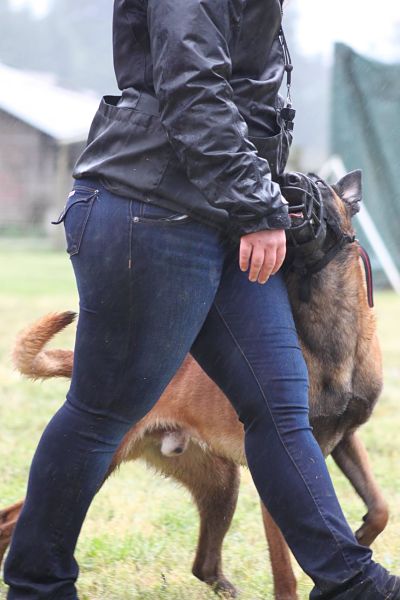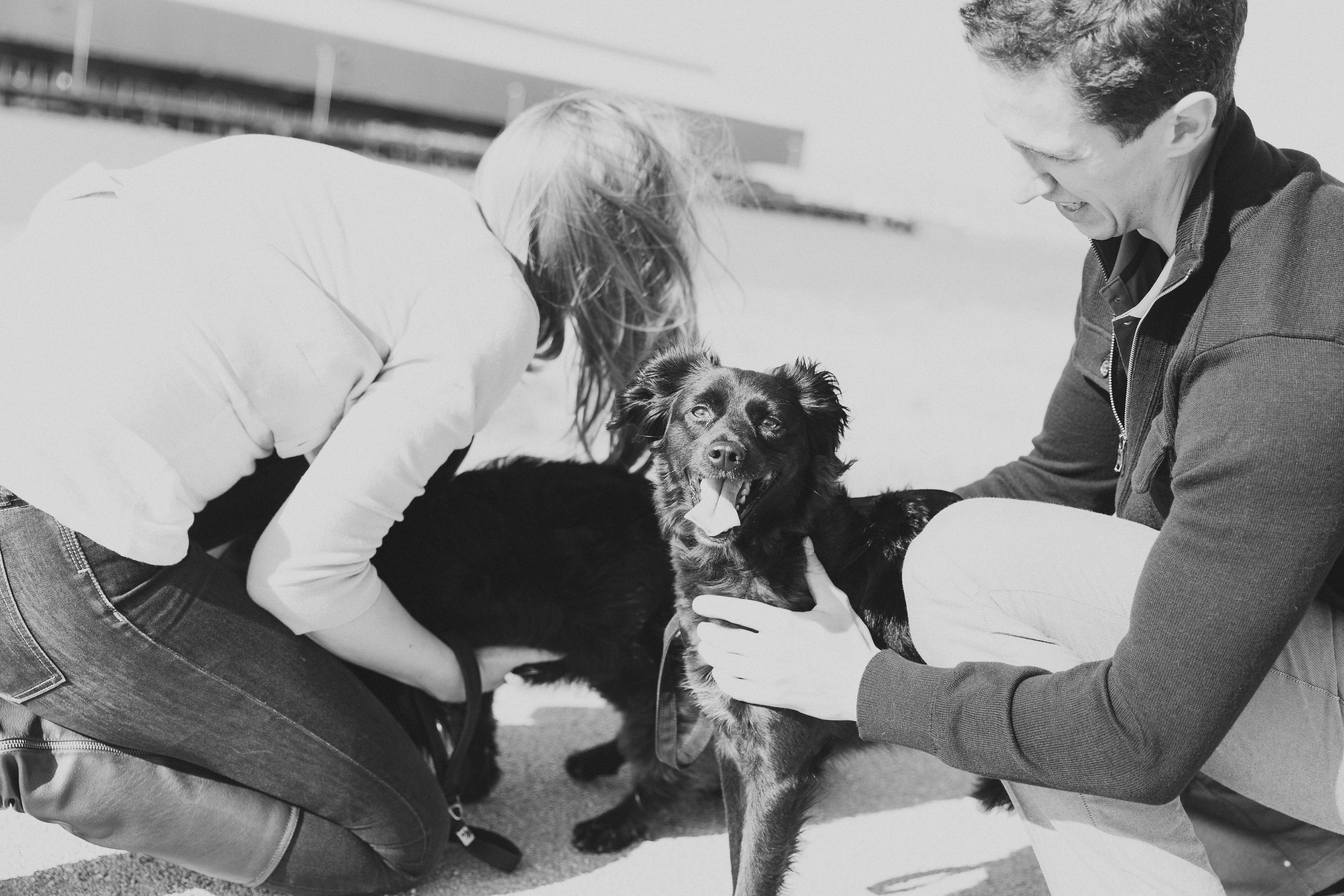That being said, I personally prefer basket muzzles for your average dog and for training purposes. These allow the dog to eat treats, drink water, and breathe without inhibition and do not create unnecessary discomfort. You can also find some heavy duty leather muzzles with closed ends. These are more frequently seen in avenues with sport or police k9s during training, and are a bit of overkill for your average pet dog since they can be quite heavy.
Training a dog to wear a muzzle should be taken slowly and be made to be a very positive experience for a dog. Taking a basket muzzle, hold a high value reward through the opening where the nose will enter. I like to use large chunks of hot dogs or string cheese, so as the dog’s face remains in the muzzle, they can continue to get little nibbles off of the larger piece. Place the muzzle in front of the dog, and lure them to place their face in with the food.
As they go to put their face into the muzzle, mark the behavior with something like ‘muzzle’ so they are anticipating placing their face in the equipment. Once they calmly place their face in the muzzle and receive the reward, remove the muzzle and reward for calmly taking the equipment off as well. As the dog becomes more and more comfortable, increase the amount of time you leave the gear on them and then begin to attach the straps behind their ears.
“As the dog becomes more and more comfortable, increase the amount of time you leave the gear on them and then begin to attach the straps behind their ears.”
Muzzles are a very useful tool that every dog should be conditioned to wear. Some dogs need to wear them for vet visits, when traveling, or even for sport work. Conditioning your dog properly to a muzzle before it becomes a necessity for them to wear it is a great precautionary training exercise that makes donning the muzzle itself a positive experience for any dog.

I have had to use a muzzle a time or two-have you? Share the reason below!
